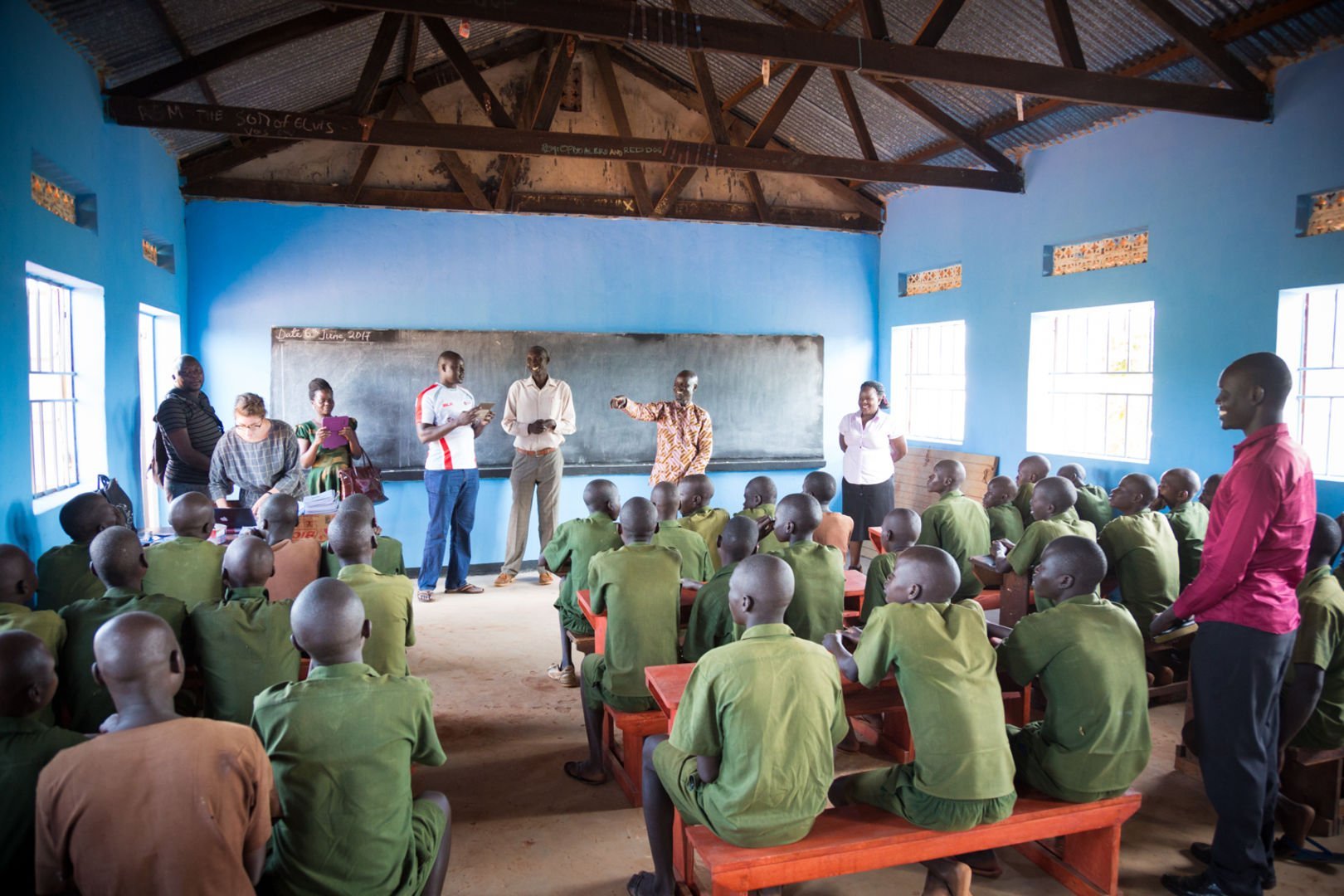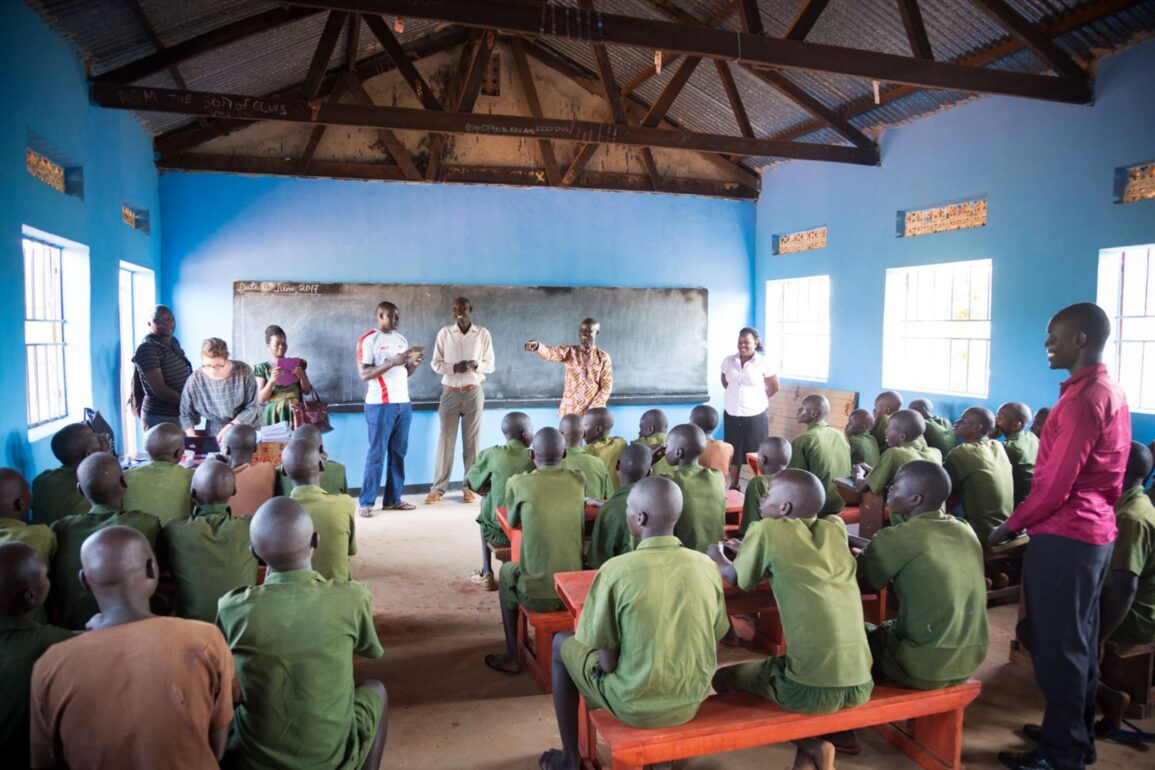
With capital offences such as murders and rape spiralling out of control across the country, fears are emerging that Uganda’s criminal justice system has fallen prey to isolated cases of manipulation by a few criminal offenders who are purporting to be juveniles to escape tough sentences, Sunday Monitor has learnt.
Article 257 (1) of the Constitution of the Republic of Uganda, 1995 and Section 2 of the Children’s Act defines a child to mean a person under the age of 18, and Section 88 of the Children’s Act, provides that the minimum age of criminal responsibility shall be 12.
This requires that before one is charged with an offence, it must be proven that the offender has attained 18 years, to avoid placing children before criminal justice systems meant for adults.
Ms Mary Kyomugisha, a probation officer at Naguru Remand Home, told Sunday Monitor that isolated cases of this nature have been reported.
“I have seen it happen, though it’s not very common. Someone by their physical look may confuse the doctor, but we have seen after further examination [that] this person is an adult. They are 18, 19,” she revealed, adding, “It’s confusing, depending on how you have grown. A 17-year-old, 18-year-old and 19-year-old may look the same depending on their background and their genes,” the probation officer noted.
The case of Elias Ejoku, a National Unity Platform (NUP)-leaning candidate in the Soroti mayoral race, who was attacked by assailants and later died in May 2022, is particularly instructive. When the police surgeon examined two suspects, Asuman Ssali and Hussein Kibirango, his investigation showed that the two were 21 and 19 respectively.
Another medical examination by Dr AS Kiwanuka, a Mulago-hospital radiologist, whose results were released on December 14, 2022, however, indicated that both suspects were below the age of 18 years.
According to Section 104 (a) (1) of the Children’s Act, a death sentence shall not be pronounced on or recorded against a person convicted of an offence punishable by death if it appears to the court that at the time when the offence was committed, the convicted person was below the age of 18. Murder under Sections 188 and 189 of the Penal Code Act, is a capital offence, punishable by death.
Acting on the basis of Dr Kiwanuka’s report, the Nakawa High Court this year sentenced the two suspects to three years in prison on the premise that they were minors at the time the crime was committed.
This case is strikingly similar to that of Paul Sendagire, a serial offender who was involved in a spate of robberies in 2017. This included one where he was a suspect in the robbery of Davis Kasozi on the Entebbe Expressway and another involving a former teacher at Kampala International School Uganda (KISU), who lost $100,000 (Shs373.8m) at his home in Munyonyo, Kampala.
On March 25, 2018, Mr Michael Kabaziguruka, the former Nakawa lawmaker, suffered at the hands of Sendagire and his gang. The rogue elements helped themselves to Mr Kabaziguruka’s money and household property after his dog was poisoned. Sendagire was subsequently charged and taken to Luzira prison.
A source reveals that ‘human rights activists’ claimed that Sendagire was not 18. They ordered that as a “minor”, he should be transferred to Naguru Remand Home in Kampala. Some sources, however, claimed that he was born in 1984, which made him 34 years at the time he committed the offences.
With his mastery of daring robberies, Sendagire, with the aid of another habitual criminal only known as Baka, also transferred from Luzira prison purportedly as a minor, escaped from Naguru Remand Home. The daring breakout in September 2018 saw the pair break through the ceiling before scaling a wall.
The Births and Deaths Registration Act makes it compulsory for every child to be registered at birth. There is also a national directive requiring all citizens aged 16 and above to register for national identity cards. Birth certificates and National ID cards are important because they provide conclusive proof of age.
Owing to a poor culture of birth registration in Uganda, it is difficult to determine the age of a child and yet this is crucial in determining how a child should be dealt with by the justice system.
“Our bio data on our national ID, sometimes extracting it from those who have it, is hard. If we had one synchronised system it would be easy. But now sometimes the details of Baine in Nira are not the same details that we have,” Mr Frank Baine, the Uganda Prisons Services publicist, told Sunday Monitor.
Where the age of an accused person or victim is in doubt and the person has no birth certificate or National ID, there are administrative guidelines in regard to determining age. The police may rely on documentary evidence to prove the age of the child to their satisfaction, the testimony of the father or mother to the child or the testimony obtained from members of the community where the child lives.
Criminal justice agencies such as the police, the Directorate of Public Prosecutions and the courts make use of other means of verifying age such as evidence from immunisation cards, school records and baptism certificates. Medical evidence can also be relied upon to prove age. Medical professionals look at the teeth and may rely on X-ray images of bones to estimate a person’s age. Such evidence can be used as corroborative evidence, but might not be conclusive on its own.
“There are some other factors that may affect the growth of these bones, things like if a person is on some medication like steroids, these stimulate bone growth. Or if a person is malnourished and they have not got enough nutrients like calcium, there can be some delays,” Dr Deborah Babirye of Kampala Imaging Centre, disclosed, adding, “So, because of those factors, it is very hard for you to come to a particular age, an accurate age for that person so we still maintain it is an estimate.”
Police Form 24
Upon arrest by the police, the suspect’s age is established by the investigating officer, typically by superficial observation. This approximate age is documented in Part A of Police Form 24, also referred to as the medical examination of persons accused of serious crime. It is then verified through a physical examination by a police surgeon, who is supposed to be a licensed medical personnel servicing the police. This information is also documented in Part B of the Police Form 24.
Ms Kyomugisha explains the importance of Police Form 24.
“We are supposed to deal with children between 12 years and 17. So when a child doesn’t have that Form 24, he doesn’t qualify even if he is young. I need to know his health status. I need to know the exact age. I need to know if he met a doctor before he came here. It is very important to us. It informs us of the health of the child and if truly we are receiving a child,” she told Sunday Monitor.
Given the significance of Police Form 24, what happens when it is disputed? During the mention of Elias Ejoku’s case in 2022, the two suspects Ssali and Kibirango, claimed they were juveniles, suggesting that the police surgeon erred in his assessment, calling into question the information documented in Police Form 24. Subsequently, an order was issued to have the duo re-examined to establish their age.
“That case was here. There were three boys involved in a murder case: one was brought here immediately as a juvenile; the two were taken to Luzira Upper Prison, and they later claimed they were children,” Ms Kyomugisha revealed, adding, “Upon their own request and informing [the] court, they were ordered to be checked. Upon re-examination, they were found to be below 18 years and then the court ordered they be brought to Naguru. Then the trial happened right here when the time came for trial.”
Discrepancies
Per Dr Babirye, such discrepancies arise because of “many factors” such as “if the person who took the radiograph did not take it so well.” Specifically, she says “if the factors they used did not demonstrate the bones so well, you can cause an error and you misinterpret, thinking it is fused or not fused.”
Experience and training, she adds, are cures to such discrepancies that call into question the rigour with which the examination was conducted.
“If there are discrepancies, then you can go ahead and compare with other parts, which are thought to be growing at the same time,” she said, adding, “For me, I stop at the ankle, the other person does the ankle and the femur, they are able to compare better. In case of resource limitation, you can only do one part; it can cause discrepancies.”
Dr Babirye also told Sunday Monitor that the slim chance of unethical practice can also not be ruled out.
“Maybe someone has bribed; someone telling them to ‘make sure I am below 18.’ But I can’t talk much about that because I have never witnessed it,” she concluded.
This post was originally published on this site be sure to check out more of their content.









